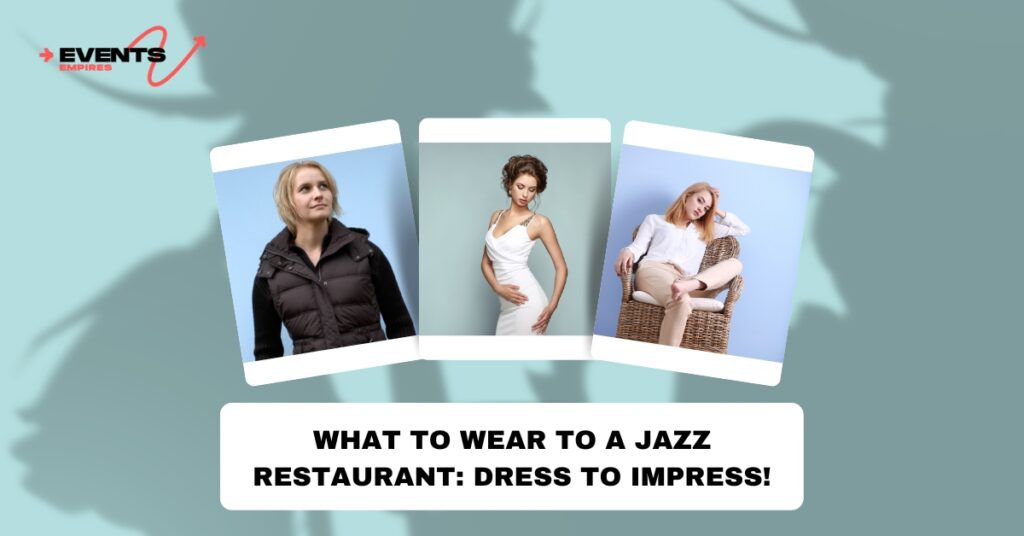To wear indoor ice skating, you should consider wearing warm, fitted clothing and gloves. Choose skates that fit snugly with thin socks.
Embarking on an indoor ice skating adventure requires the right attire for both comfort and performance. However, dressing appropriately enhances the experience, ensuring you stay warm despite the chilly rink temperatures.
Also, it helps you move more freely on the ice and improve your overall enjoyment of the activity.
Opting for layers allows for flexibility as you can remove items if you get too warm after several laps around the rink.
in fact, prioritize clothes that allow freedom of movement in wearing indoor ice skating such as stretchy leggings or close-fitting activewear. Moreover, consider pairing them with a long-sleeved top and a jacket that you can tie around your waist if necessary.
Gloves are a must to keep your fingers warm and to protect them in case of falls when you wear indoor ice skating. Additionally, selecting the right skates is crucial. Then, they should be comfortable, provide proper ankle support and be paired with thin socks to prevent blisters and allow for better control.
Dressing smartly means you’ll spend less time adjusting your outfit and consequently, more time enjoying the glide and thrill of the ice.
Dressing For The Rink
When you plan a day to wear indoor ice skating, picking the right attire is key. It not only ensures your comfort but also enhances your performance on the ice.
It’s not only about style but also comfort, warmth and safety on the ice. Additionally, a well-dressed skater enjoys the activity more and stays on the rink longer. Let’s break down the essentials.
Layering Essentials
Dressing in layers is the secret to staying warm and agile. So, follow this simple layering guide:
- Base Layer: Start with a lightweight, snug thermal to keep your core warm.
- Mid Layer: Add a fleece or sweater for insulation.
- Top Layer: Finish with a water-resistant jacket that blocks the cold air.
Remember to keep the layers fitted to maintain ease of movement.
Choosing Your Fabrics Wisely
Not all fabrics offer the same protection on ice. Your fabric choices should include:
| Fabric Type | Properties | Usage |
| Synthetics | Quick-drying, moisture-wicking | Base layers |
| Fleece | Warm, lightweight | Mid-layers |
| Water-resistant shells | Blocks wind, repels water | Top layers |
Select breathable fabrics that prevent overheating. Avoid cotton as it holds moisture.
Footwear Fundamentals
When you glide across the ice, the right shoes are key. Think of your feet as cars and ice skates as the perfect snow tires. You need grip, comfort and control to skate well. Consequently, your shoes on ice matter significantly.
Proper Ice Skates Fit
Ensuring proper ice skate fit is crucial for better control and comfort on the ice. Moreover, remember, your skate size might differ from your regular shoe size. Here’s a quick checklist to help you find the perfect fit:
- Skates should be snug but not tight. Say no to pinched toes!
- Heels must stay put. No slipping or sliding inside.
- There should be a little wiggle room for toes.
- Support is crucial. Ankle wobble? That’s a no-go.
Most rinks offer rental skates. They sharpen them, so you get a good grip. Always ask for help if you’re unsure about the fit and how to wear indoor ice skating. Perfect fit equals fun on ice!
Thoughts On Socks
Don’t ignore your socks – they are your feet’s best friends! Additionally, here’s what’s best for ice skating:
- Aim for thin to medium thickness. Thick socks are not always better.
- Synthetic materials trump cotton. They keep moisture away.
- Make sure socks are smooth without folds. Bumpy socks cause blisters.
- Tall socks are great. They protect from skate rubs.
Your socks must complement your skates. Furthermore, together, they should fit like a glove. Cozy feet mean more time skating with ease.
Accessories For Style And Warmth
Stepping onto the ice means more than just graceful moves and fun spins; it’s about finding the right balance between staying warm and looking cool. The perfect accessories accomplish just that. They keep you toasty while adding a dash of style to your ice skating outfit. Now, let’s explore some must-have items that serve both function and fashion when you wear indoor ice skating.
Gloves And Mittens
Keeping your fingers warm is a priority on the ice. Moreover, gloves and mittens are not just practical, they are a style statement. Here are some top tips:
- Choose water-resistant fabrics to keep your hands dry.
- Opt for bold colors or patterns to stand out.
- Touchscreen-friendly fingertips allow for easy phone use.
Remember, mittens might offer more warmth whereas gloves provide a better grip for those new to ice skating.
Beanies And Earmuffs
Your head and ears need protection too. Additionally, beanies serve up snug warmth and come in a variety of colors and designs. Keep in mind:
- Thick-knit beanies will give you maximum warmth.
- Fun embellishments, like pom-poms, add playful flair.
Prefer not to mess up your hair? Earmuffs are your friend. They wrap around the back of your head, keeping your ears warm without squashing your style. Go for:
- Fuzzy materials for extra comfort.
- Adjustable bands for a perfect fit.
Performance Attire
Stepping onto the ice calls for the right balance between style and functionality. Not only should your outfit look striking as you glide across the rink, but it should also support your performance. Performance attire isn’t just about dazzle—it’s comfort and safety that take lead roles.
Flexible Clothing Choices
Flexibility is key for any indoor ice skating wardrobe. Additionally, clothes that stretch enable a skater to move without restraint. Finding the sweet spot between snug and loose is crucial. It helps prevent snags and stumbles.
- Leggings or tights
- Close-fitting athletic pants
- Stretchable long-sleeved tops
- Layer with a breathable jacket
Avoiding Wardrobe Malfunctions
To stay clear of unexpected slips and trips, secure clothing fits well. Test your outfit before hitting the ice. Make sure nothing dangles or drags.
- Secure zippers and buttons
- Ensure nothing is loose or hanging
- Opt for garments without hooks or hard attachments
- Wear gloves to protect hands and keep them warm
Safety First
Heading onto the ice rink means ensuring you stay safe and injury-free. Additionally, it’s not just about gliding gracefully or mastering pirouettes; it’s about dress code meeting safety measures. Whether beginners or not, everyone should consider protective gear. This is your go-to guide for a painless and enjoyable indoor ice skating experience.
Protective Gear For Beginners
New to ice skating? Protective gear is essential. Imagine yourself wrapped in a personal safety bubble, minus the bubble. Here’s what you’ll need:
- Helmet – Keeps your head safe.
- Wrist guards – Protects your wrists during falls.
- Knee pads – Cushions your knees.
- Elbow pads – Guards your elbows on impact.
This kit is your basic armor against the hard ice. Be smart — gear up before you step out!
The Importance Of Pad Placement
Correct pad placement is vital. Pads must cover the entire area they’re meant to protect. Misplaced pads can’t guard you properly. Here’s a quick rundown:
| Pad Type | Proper Placement |
| Helmet | Snug on head, chin strap secure. |
| Wrist guards | Cover entire wrist, allow hand movement. |
| Knee pads | Central to knee, allow leg bending. |
| Elbow pads | Fixed on the elbow, not restricting arm motion. |
Each pad should be comfortable yet firm, never lose. Secure equipment equals a secure skater. Safety outweighs everything — so pad up and enjoy your glide with peace of mind.
Apres-skate Fashion
After gliding on ice, it’s time for cozy, stylish comfort. Furthermore, Après-Skate fashion is all about warming up and chilling out. Imagine snug outfits that transition smoothly from activity to relaxation. This fashion seamlessly blends style and practicality, ensuring that skaters look and feel great off the rink.
Transitioning From Rink To Relaxation
Preserve the day’s grace with fashion that moves as you do:
- Swap skates for boots: Choose fur-lined, non-slip soles.
- Wear layers: Don soft knits like cardigans and wraps over your skating gear.
- Add accessories: Beanies and fluffy scarves for extra warmth and style.
A smooth transition sets the tone for relaxation. Additionally, let your post-skate wear be all about comfort-meets-style.
Keeping Functionality In Mind
Functionality in fashion is key. Aim for chic but don’t forget practicality:
| Item | Functionality |
| Insulated Jacket | Keeps you warm post-skate. |
| Moisture-wicking Fabrics | Stay dry and comfortable. |
| Flexible Pants | Maintain mobility while lounging. |
Outfits with versatility go a long way. From indoor warmth to outdoor cool, remain stylish and adaptable with functional après-skate wear.
Frequently Asked Questions For (FAQ)
Clothing for indoor ice skating should be warm, comfortable, and allow for flexibility. Layering thin garments works better than wearing bulky items.
Jeans aren’t ideal for ice skating as they restrict movement and don’t provide warmth if they get wet. Opt for stretchable, moisture-wicking fabric instead.
While not mandatory, protective gear like helmets, knee pads, and wrist guards is recommended, especially for beginners, to prevent injury upon falling.
Yes, figure skates are suitable for casual indoor ice skating as they provide good ankle support and are designed for rink use.
Thin, snug-fitting socks that reach above your ankle are best for ice skating. They prevent blisters and keep your feet comfortably warm.
Conclusion
Dressing right is key to enjoying your indoor ice skating adventure. Prioritize warmth and flexibility with your attire to glide effortlessly. Additionally, remember that well-fitting skates are crucial for foot support and on-ice stability. Embrace these tips, stay stylish and steady, and make your rink time unforgettable. Happy skating!


